Physical Address
304 North Cardinal St.
Dorchester Center, MA 02124
![]() Access the accompanying videos for this chapter online. Available on ExpertConsult.com .
Access the accompanying videos for this chapter online. Available on ExpertConsult.com .
Most undescended testes are palpable at various levels in the inguinal canal. Approximately 10% are not palpable and are located in the abdomen. Surgical management of these nonpalpable testes has evolved toward the laparoscopic route, with either a one-stage or a two-stage approach. The primary advantage of laparoscopy over initial inguinal exploration for a nonpalpable testis is that when the testis is in an intra-abdominal position, laparoscopy avoids injury to the collateral vasculature that may occur with initial inguinal dissection. This collateral vasculature is necessary to nourish the intra-abdominal testis if the main testicular vessels are ligated and divided (Fowler-Stephens [FS] orchiopexy). Although most surgeons prefer a two-stage FS procedure if it is necessary to divide the main testicular vasculature, others find a one-stage FS laparoscopic orchiopexy to be as successful.
An algorithm for boys older than 6 months with a nonpalpable testis is shown in Fig. 20-1 . Because imaging studies are not universally accurate, they are not routinely used for this condition. Should a testis be visualized on the imaging study, initial laparoscopy is still indicated.
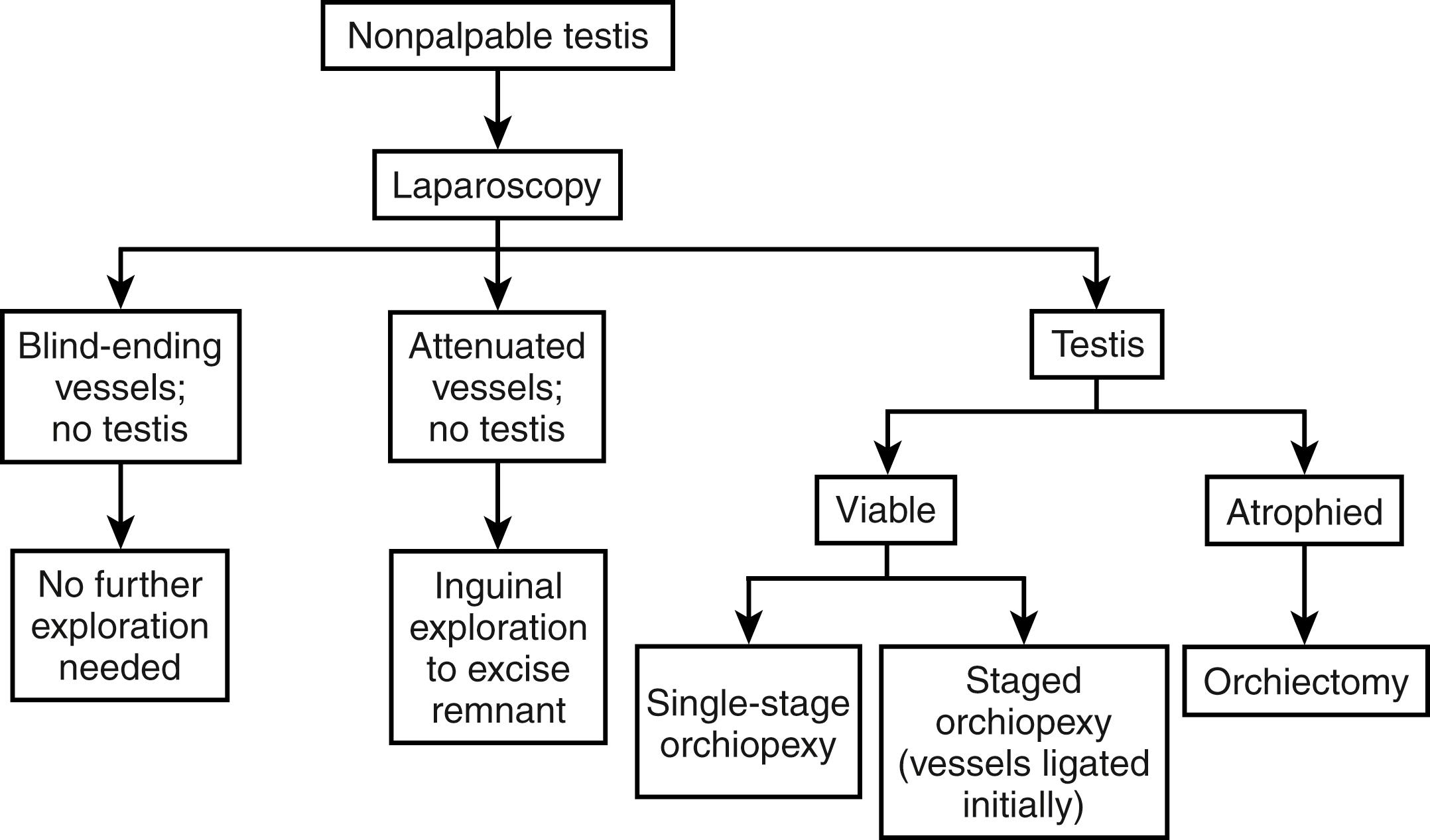
The patient is placed supine in a slight frog-leg position on the operating room table, and general endotracheal anesthesia is administered. The abdomen and scrotum are prepped and draped widely. A vertical 5-mm incision is made in the umbilicus, and a 5-mm cannula with a blunt trocar is introduced directly through the skin and fascial incision. Diagnostic laparoscopy is then performed. Rarely, the vas deferens or testicular vessels end blindly in the retroperitoneum ( Fig. 20-2A ). In this situation, if the internal ring is closed and if there is no evidence of an intra-abdominal testis, inguinal exploration is not necessary. However, if the testicular vessels and vas deferens are seen to enter the inguinal canal, then inguinal exploration is performed ( Fig. 20-2B ). Inguinal exploration is necessary, either to remove the remnant of a testis that torsed and subsequently atrophied or to perform an orchiopexy if a small but viable testis is found.
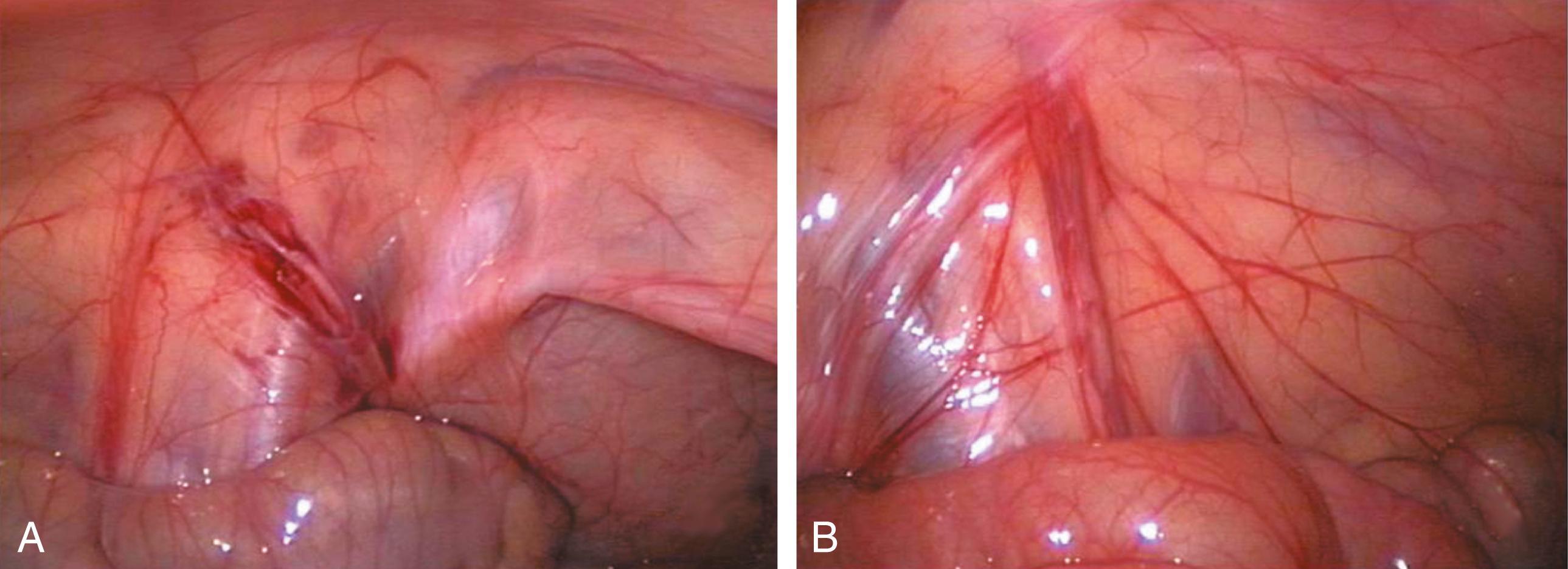
In many cases, however, an intra-abdominal testis can be seen lying inside the internal ring associated with a patent processus vaginalis ( Fig. 20-3 ). If an intraabdominal testis is identified, our first maneuver is to assess whether or not a laparoscopic orchiopexy can be preformed without dividing the testicular vessels. We grasp the peri-testicular tissue with an atraumatic grasper and maneuver the testis to the contralateral internal ring. If it reaches the contralateral internal ring, then it will likely reach into the scrotum and a laparoscopic orchiopexy without dividing the testicular vessels is performed. However, in most cases, there is not enough mobility to the testis with its vasculature intact, and either a one-stage or a two-stage FS procedure is necessary. Later in this chapter, there will be a description of a novel technique (the Shehata operation) that can be utilized as well. If a staged laparoscopic approach is needed, the initial procedure is ligation and division of the testicular vessels followed by a second-stage laparoscopic orchiopexy 6 to 9 months later. This staged approach is favored to allow augmentation of the collateral vasculature that will eventually nourish the surgically relocated testis. A description of the first- and second-stage laparoscopic FS orchiopexy follows. The essential steps in the laparoscopic orchiopexy without dividing the vessels are the same as the second-stage laparoscopic orchiopexy with the vessels already divided.
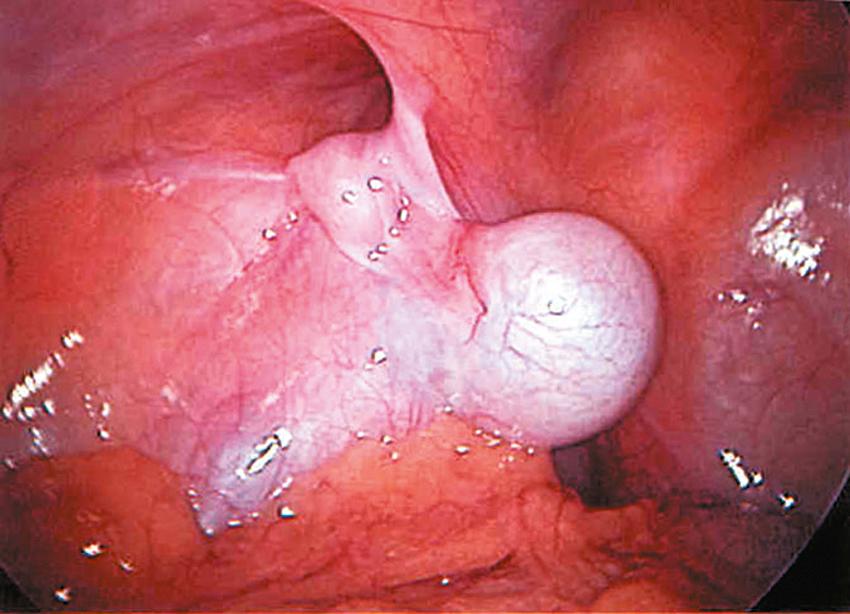
At the first stage of a planned two-stage approach, two stab incisions are made through the abdominal wall opposite the intra-abdominal testis. A 3-mm atraumatic grasping forceps is introduced for use in the surgeon’s left hand and a Maryland dissecting instrument connected to cautery is inserted for use in the surgeon’s right hand ( Fig. 20-4 ). The patient is then placed in a reverse Trendelenburg position, allowing the intestines to fall away from the area of dissection. The retroperitoneum overlying the testicular vessels proximal to the testis is then opened bluntly, and the testicular vessels are grasped with the atraumatic forceps. Being sure that the Maryland dissecting instrument is not in contact with any other structures, cautery is applied to the Maryland forceps to ligate and then divide the testicular vessels that have been grasped by the atraumatic grasping forceps. This ligation and division are accomplished several centimeters away from the testis ( Fig. 20-5 ). After ligation and division of these testicular vessels, the instruments are removed and Steri-Strips (3M Co., St. Paul, MN) are used to close the stab incisions. The umbilical cannula is then removed, the abdomen is desufflated, and the umbilical fascia is closed with interrupted 3-0 Vicryl (Ethicon Inc., Somerville, NJ). The umbilical skin is closed with interrupted 5-0 plain catgut suture, and sterile dressings are applied.
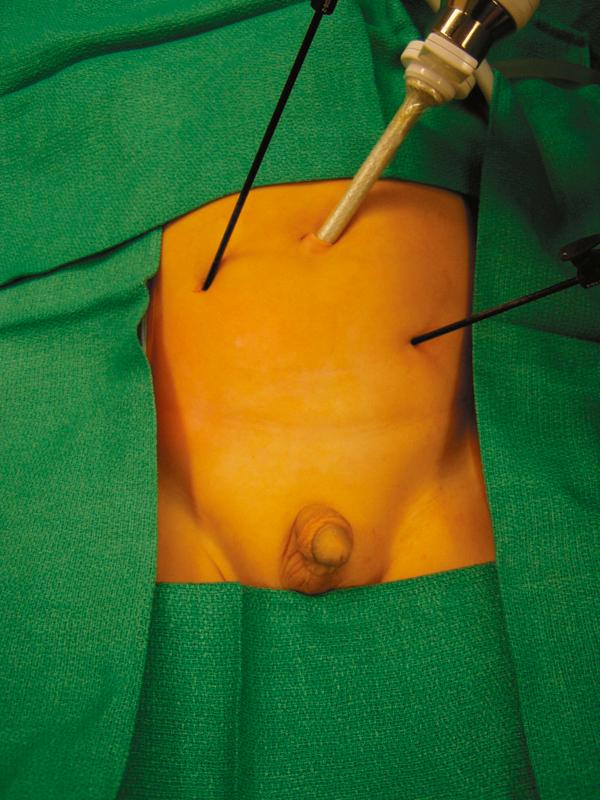
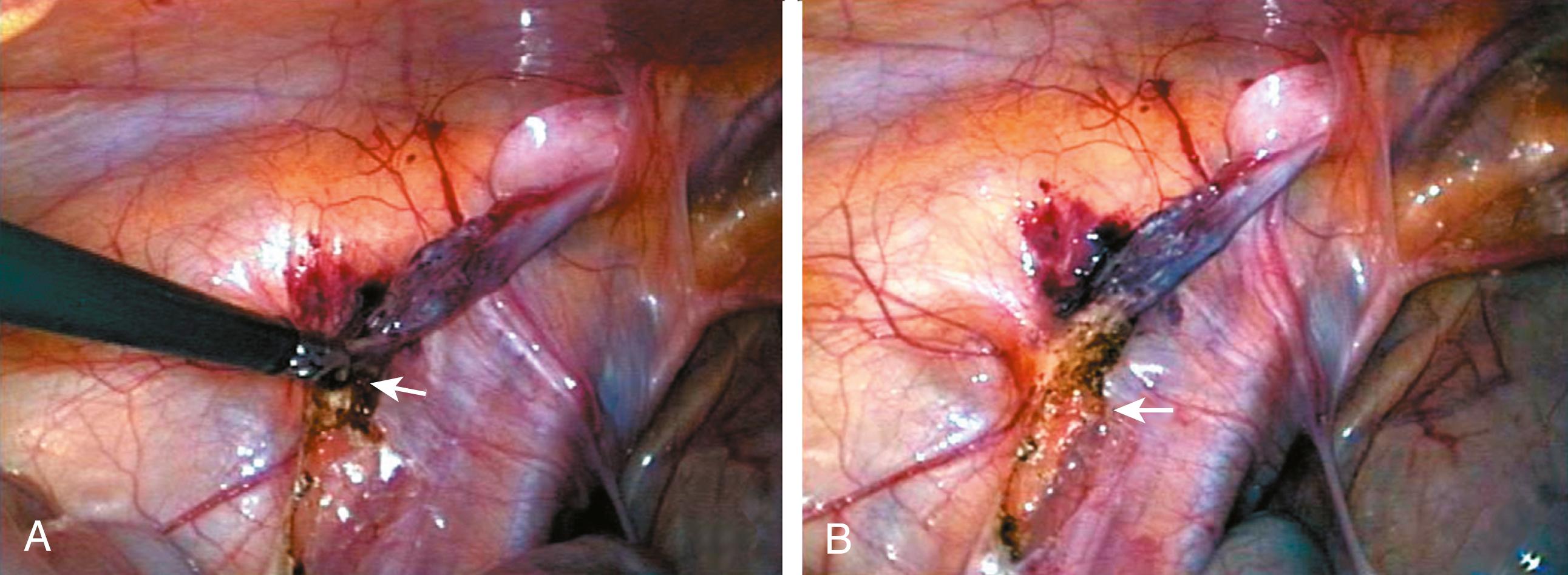
The patient is awakened and is usually ready for discharge 1 to 2 hours after the operation. A clinic visit is scheduled for 2 weeks after the operation. Assuming that no postoperative problems have occurred, the patient is scheduled for a return visit in 6 to 9 months for assessment and to schedule the second-stage laparoscopic orchiopexy.
Six to 9 months after laparoscopic ligation and division of the main testicular vessels to the intra-abdominal testis, the patient returns to the operating room for the second-stage operation. He is again placed in the frog-leg position on the operating table, and general endotracheal anesthesia is administered. As occurred at the first operation, the umbilical skin and fascia are incised and a 5-mm cannula is then introduced. Two stab incisions are again made near the previous stab incisions. As in the first operation, in the surgeon’s left hand is an atraumatic grasping forceps and in the right hand is the 3-mm Maryland dissecting instrument connected to cautery. A hook-tip cautery can also be used by the surgeon’s right hand. The ends of the testicular vessels near the testis are then grasped, and the peritoneum lateral to them is incised around the superior rim of the internal inguinal ring. The dissection is then carried medially from the testicular vessels over the ureter and toward the midline. When the ureter is approached, the cautery is no longer used, the Maryland dissecting forceps (or hook-tip cautery) are removed, and scissors are inserted to incise the peritoneum. After the boundaries of the dissection are outlined, blunt dissection is performed to sweep the peritoneum caudally and the vasculature that it contains. At this point, using the atraumatic grasping forceps in the left hand, the surgeon grasps the gubernaculum in the inguinal canal and delivers it into the abdominal cavity ( Fig. 20-6 ). The distal aspect of the gubernacular attachment is then incised with the Maryland dissecting instrument connected to cautery (or hook-tip cautery), thus freeing the testis of any distal attachments. Following this maneuver, the testis is almost completely mobilized and is ready for delivery into the scrotum. During all this dissection, great care is taken to always visualize the vas deferens, the ureter, and the iliac vessels.

Having mobilized the testis intra-abdominally, attention is turned to the scrotum. A 10-mm incision is made transversely in one of the rugae of the scrotum, and dissection is continued to the dartos fascia. A dartos pouch is created in all directions followed by an incision in the dartos fascia. Using the Step cannula system, the Veress needle and its expandable sleeve are then introduced through the incision in the dartos fascia, advanced over the pubic tubercle, and visualized as they enter the abdominal cavity ( Fig. 20-7A ). Great care must be taken not to injure the bladder during introduction of this Veress needle and sleeve. For this reason, we often do not place a catheter in the bladder, as we prefer to see the outlines of the bladder wall when inserting the Veress needle and sleeve. Once the Veress needle and its sleeve are inserted into the abdominal cavity, the needle is removed and a 10-mm cannula with blunt trocar is introduced through the expandable sleeve ( Fig. 20-7B ). It is important to use a 10-mm cannula, rather than a 5-mm size, as this larger cannula will create a soft tissue tract large enough for the testis to be delivered from the abdomen into the scrotum. Under direct visualization, a grasping instrument is introduced through the 10-mm cannula and into the pelvic cavity. The gubernaculum is delivered to this instrument and withdrawn into the 10-mm cannula. Sometimes the entire testis can be delivered into the 10-mm cannula, but often it cannot ( Fig. 20-8 ). It is helpful to reduce the intra-abdominal pressure to 5 mm Hg when exteriorizing the testis.
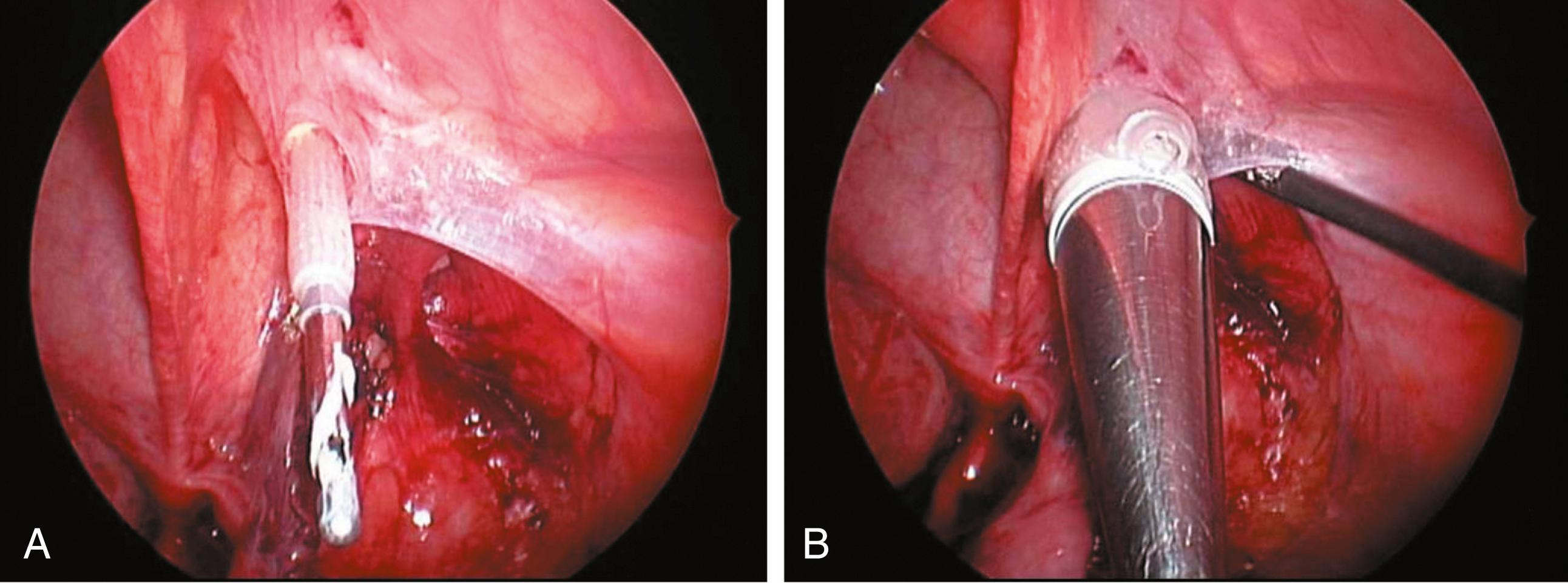
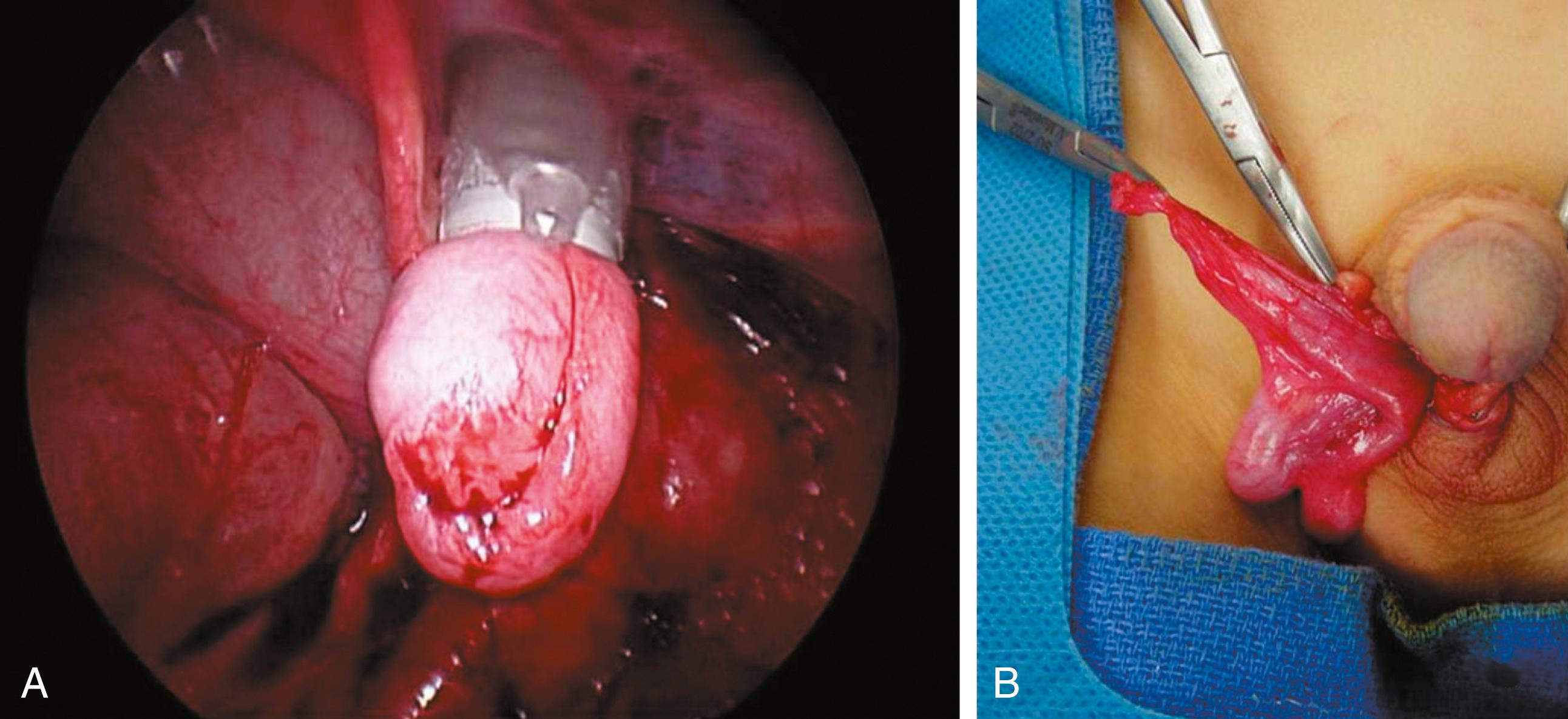
After delivering the testis through the dartos fascia, the abdominal cavity is inspected for bleeding or injury to any structures ( Fig. 20-9 ). The incision in the dartos fascia is then closed around the testis, and the testis is secured to the inferior portion of the scrotum with 5-0 PDS suture (Ethicon Inc., Somerville, NJ). It is then placed in the dartos pouch and the scrotal skin is closed over it with interrupted 5-0 chromic sutures.
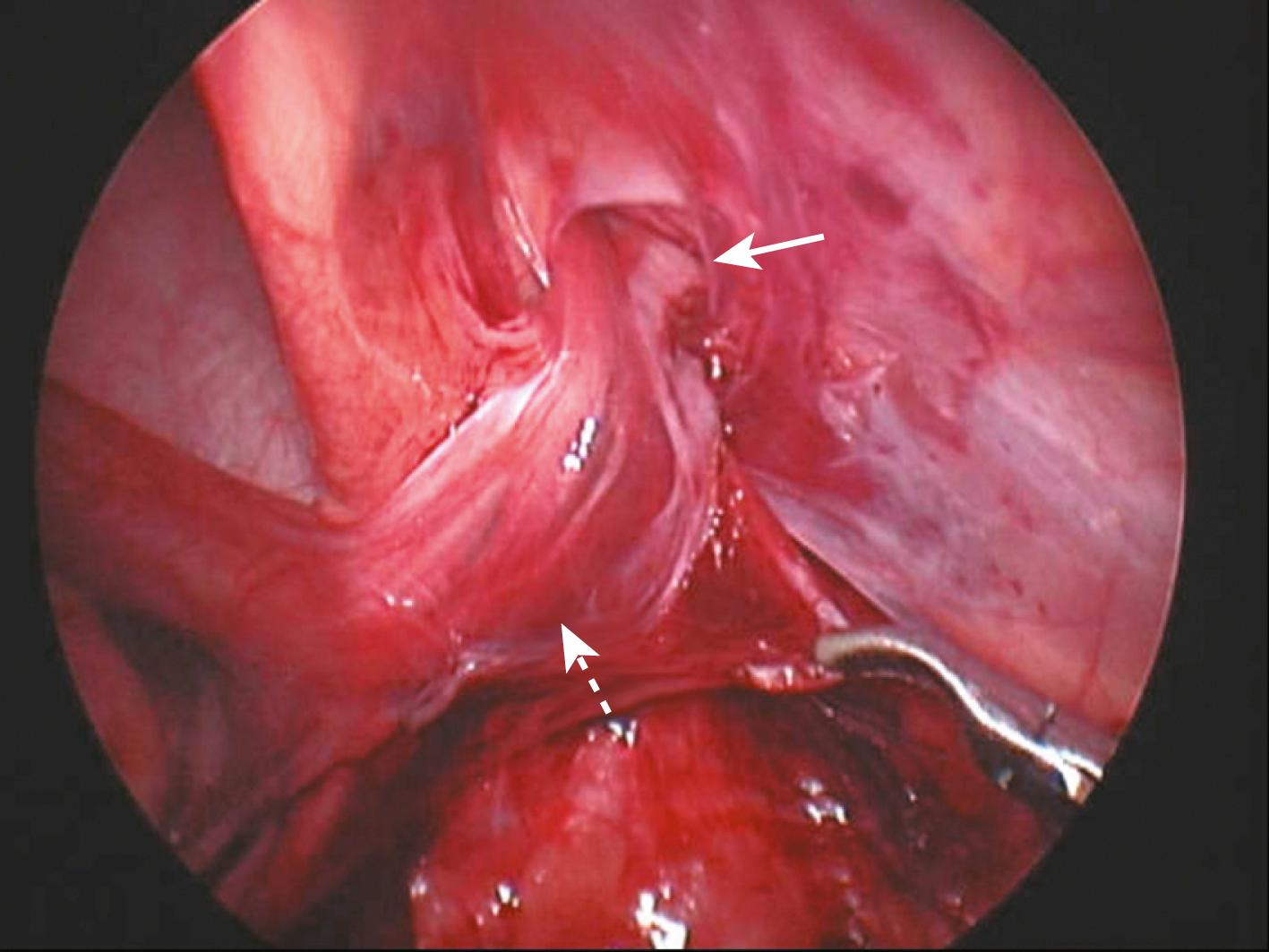
Attention returns to the abdominal cavity, and the area of dissection is inspected. The 3-mm instruments are withdrawn and the stab incisions closed with Steri-Strips. The umbilical fascia is approximated with 3-0 absorbable sutures and the skin incision closed with 5-0 plain catgut suture ( Fig. 20-10 ). Sterile dressings are applied, anesthesia is terminated, and the patient is transported to the recovery room. These boys are usually ready for discharge 1 to 2 hours later and return to the clinic for a postoperative visit in 2 weeks. An important postoperative instruction is to avoid a straddle toy for at least 3 weeks and preferably a month to allow the incisions to heal completely.
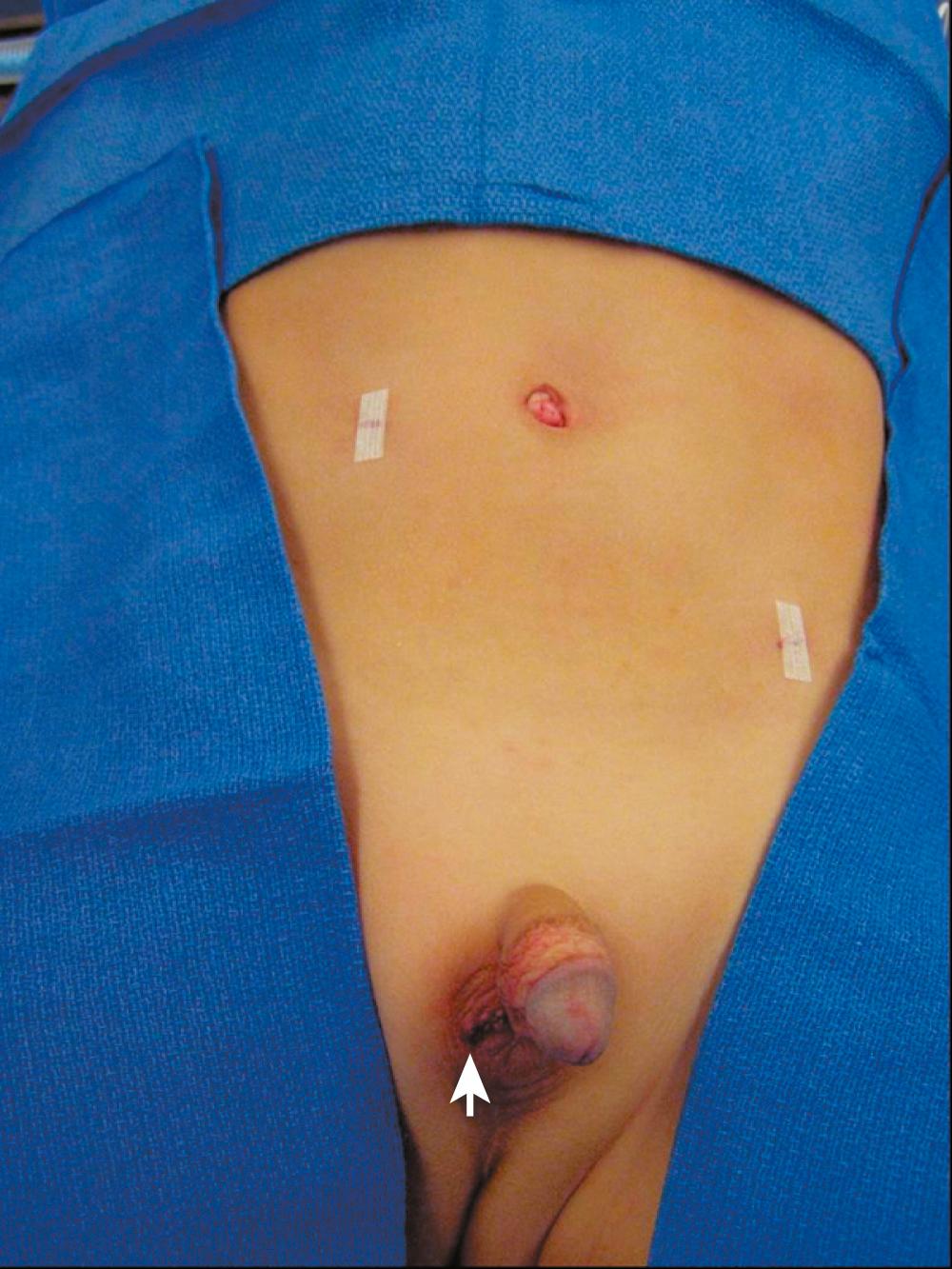
Become a Clinical Tree membership for Full access and enjoy Unlimited articles
If you are a member. Log in here